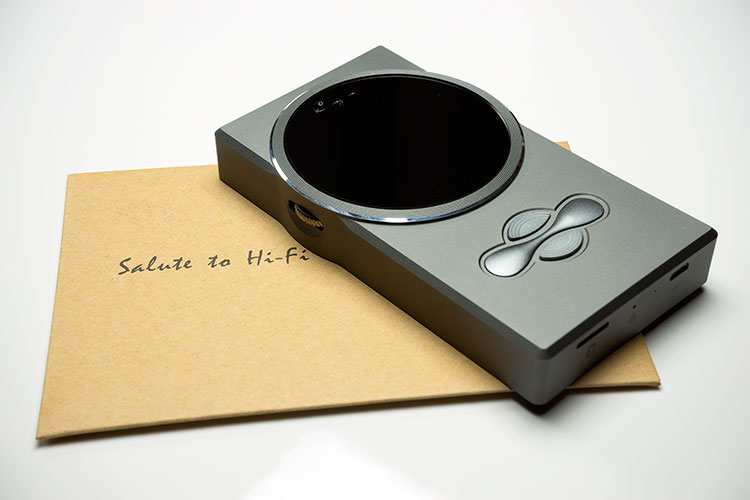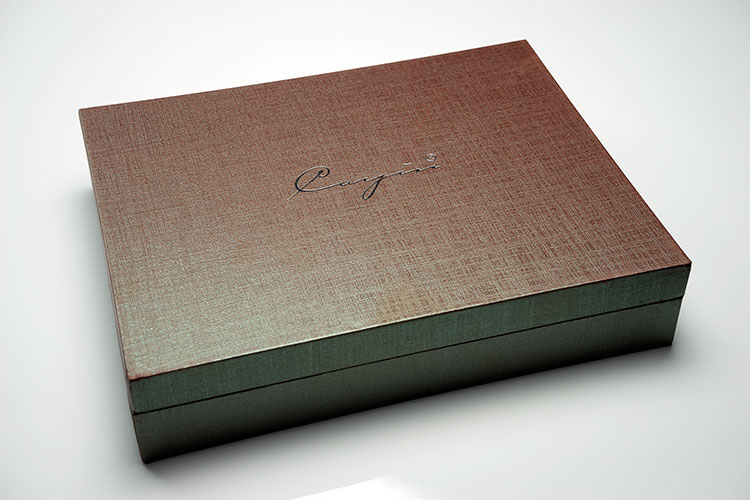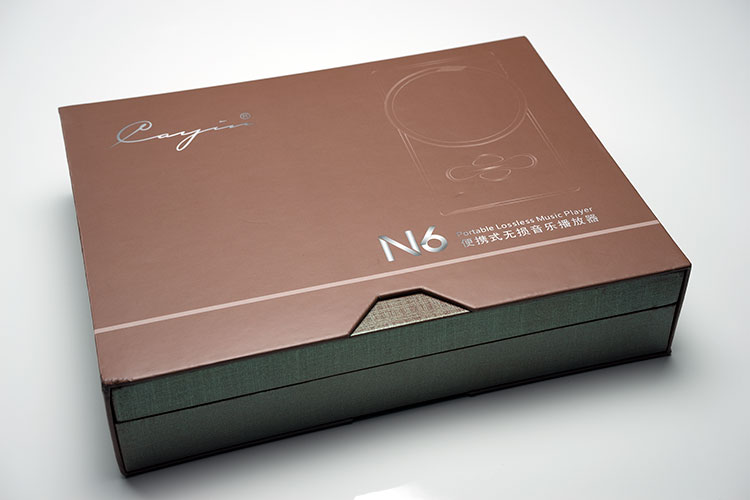Sound Impressions
Summary
The Cayin N6 tonality is neutral, natural almost, and free-flowing with an excellent sense of space and imaging. Bass is linear, relatively neutral, and flat.
The mids have bags of clarity and never feel congested and the treble has a slight sparkle but with very good attack and decay and never once sounding harsh.
A few people have stated that the N6 is the FiiO sound engineered onwards and upwards and to some extent that is a fair reflection but it negates the control and more natural sound in the upper mids and vocal presence as well as airier top end and bigger sound stage.
Perhaps this is what the FiiO X5 aspires to be but the rougher upper mids and harsher metallic lower treble just drags it down to a level or 2 below the N6.
Bass
The N6’s bass is one of the more controlled bass responses in the DAP market today. There is excellent extension, and a good definition but it is leaner, flatter, and far less dominant than say the FiiO X5 which tends to sound more weighted but slightly slower.
Resolution and detail beat the X5 heads down but it loses to the X5 and the DX90 for initial impact or pure low-end thump. This is a refined and engaging low-end response and an accurate one at that and doesn’t cater to instant gratification unless you EQ it.
Do not confuse this as being a bass-light DAP though, EDM does sound convincing when called upon, but it just doesn’t linger and bleed and generally weighs the whole signature down.
With the N6 what you are getting is coherence and realism above and beyond what the two mid-tier DAPs can offer. It will not compensate by going for either ‘perma-weight’ or bigger dynamics because it simply does not need to.
Mids
Mids are clean, clear, and with good width and separation; helped no doubt by a lack of bass bleed and a continuance of that relatively neutral and linear presentation.
The N6 mids do not have the thickest or richest flavor preferring instead to focus on detail and articulation. Timbre is excellent though on the N6 mids with a very natural vocal presence free of any harshness or unnerving grain.
It is not the most forward of vocal presentations and the odd time it can feel the wide imaging of the N6 can leave vocals a little detached and stand-off when things get a bit energetic.
However, dial it down and you can get plenty of emotion and detail and excellent control on sibilance without ever sounding blunted or soft.
The X5 had that metallic-sounding vocal presence that grated with me despite its softer treble and it just destroyed the older AK100’s midrange in terms of timbre and musicality. These types of DAPs get me excited.
Treble
The extension and articulation on the N6 treble were excellent. There is a tiny bit of sparkle here and there but if I am not mistaken Cayin has just slightly pulled back the treble on minute levels and kept the lower treble peak to a minimum to keep that extension and clarity without any harshness or tizzy after-effect.
Percussion and cymbal notes are very well defined but not the center of the N6’s treble universe.
I guess it could ultimately depend on how you mate the N6 and your source tracks but it’s also a very unforgiving DAP with poor recordings.
The huge sense of space and air around the treble response is addictive with the right pairing and places it head and shoulders above the X5 from FiiO and edges ahead of the DX90 as it just feels a more natural and flowing treble response compared to the DX90 which can sizzle a bit more.
Staging & Imaging
That shared OPA134 opamp from the C5 means the N6 is all about a big sound stage, excellent separation, and above-average imaging.
The key difference between the C5 and the N6 is the slight reduction in power making the N6 vastly more suitable and noise-free for an IEM as well as a slightly higher level of resolution with the excellent DAP implementation.
The C5 also has a slightly higher level of coloration and bass bias making the N6 a slightly wiser choice for considered listening. Dynamics are clear and present with much greater depth than the DX90 and X5 are capable of.
The N6 also delivers a smoother response and better control in instrumentation than the similarly sized Shanling M3 which is also neutral but slightly more forward, and intimate and focuses more on outright musicality rather than pinpoint accuracy.
Layering and space are convincing especially at the top end allowing the N6 to respond well to classical genres and large soundtracks where a lot is going on.
That speedy and tight presentation of the N6 meshes well with orchestral, opera, and sweeping snyth work that needs a lot of space to open up. It is one of the few DAPs I have that fills up my Vision Ears VE6 XControl CIEMs, a set of monitors known to have almost HD800-like qualities.
Synergy
The N6 doesn’t quite have the juice to knock a planer out of the ballpark but it is very well adjusted for IEMs with a very low noise level on a wide variety of IEMs I tested it with such as the VE6x, the IE800, Westone 4, UE900 and the Custom Harmony 8.
The neutral and clean properties of the N6 as well as the superior sound staging qualities benefitted those IEMs with a slightly neutral to warm or natural tonality.
Earphones such as the Fidue A83 perhaps lack a little in weight and end up sounding a bit too bright. I wasn’t that fussed with the Dita match-ups but it sounded excellent and engaging with the VE6X’s much-vaunted staging properties, more accurate timbre, and well-refined and clear vocal presence.
Darker and more attenuated earphones such as the Custom Art Harmony 8 benefitted from the cleaner and airy properties of the N6 also. Sometimes the matchability of the Harmony 8 is all down to cables and sources given the lack of air in the treble response.
The N6 did a good job of injecting a little more sparkle in the 8’s top end without the need to cable swap. This was not a huge amount but just enough for the vocal presence to be a bit more defined or clearer and certainly better suited than pairings with the X5 and the original AK100/120.
The Harmony 8 vocal performance is a joy to behold sometimes and the N6 does a great job giving enough space and presence for them to perform.
The matching with the IE800 was excellent and much better than I thought might be the case. That fussy treble of the IE800 felt more calm and contented than normal, female vocals felt real, detailed, and sibilant-free. The N6 positively enjoyed the space and depth provided by the IE800’s above-average sound stage.
This is the kind of match to show off the detail and speed of the N6 and if you want plenty of bass definition and extension then the IE800 is a very potent and defined partner.
Selected Comparisons
Of all the DAPs selected only the N6 natively decodes DSD but then again only the AK120 (original SRP) has a higher price tag than the N6. All DAPs were tested with a Sennheiser IE 800, Vision Ears VE6 XControl, Custom Art Harmony 8, and a Westone 4 IEM.
iBasso DX90
The DX90 has for the longest time been my favorite mid-tier DAP and while the N6 is hardly mid-tier at $600, well maybe depending on how you spent your day in the bookies, it should in theory replace the DX90 as my mid-priced go-to DAP for sound.
Physically the DX90 is the more portable of the two with a touch-based interface and a maturing OS that is vastly more stable than when it was first released. It might have an edge over the N6 in that respect and I can’t deny it stacks better with the likes of the IEM portable king, the RX from ALO Audio
However, in terms of pure resolution, speed, clarity, and sound stage the N6 is the more natural performer and more impressive with a wider range of IE’s.
Whereas the DX90 tends to just chew out the treble range of a few IEMs coming across as slightly strident and forward from time to time, the N6 manages to be a bit gentler but no less convincing.
The ability for the N6 also to play native DSD (note I tested Pink Floyd at DSD256 also with no issues so that seals the deal for me) with both line out and coaxial out is a big win in its favor.
FiiO X5
Tonally the X5 and the N6 have possibly more in common than say the DX90 and certainly the AK120 in terms of neutrality but really that’s where the comparisons stop tonally. The N6 is pricier than the X5 with good reason as it left the X5 in its rearview mirror basically in many aspects.
In its favor, the X5 has the more evolved and intuitive interface and the clock wheel is more central to the system than the jog wheel of the N6 though neither actually controls volume.
The X5 also has a higher capacity dual slot microSD configuration but the N6 does have on-board memory albeit at only 8GB. The X5 is also more compact in size and dimensions (no surprise there).
Sound-wise the N6 is operating at a much higher level. It is more detailed, and more resolving with a smoother top-end delivery that the X5 lacks and plenty of airy space to boot also.
The X5’s harsher vocal presence is obvious compared to the N6’s more natural timbre and while it has decent bass weight it lacks the same level of extension and detail the N6 bass signature is capable of. The N6 just sounds far more engaging and realistic than the X5.
Astell & Kern AK120
I only truly enjoy the AK120 when strapped to the Glove A1 but it does have a certain charm or appeal given its slightly warmer and more laid-back signature than the more sterile and colder original AK100.
Yes, we have moved on but I haven’t unless CEntrance decides to do a Glove 2 for the newer AK versions. This too has a touchscreen much the same size as the DX90 and an operating system that is slightly more polished than the N6 not to mention a supremely portable size and desirable form factor compared to the huge N6.
I feel I am going to be saying that quite a lot in reality because outside of the M3 the N6 is the biggest DAP of the lot.
The AK120 also houses 32GB of onboard memory compared to just 8GB on the N6, though it is 32GB of slightly lower quality regular flash memory on the AK120.
The N6 though has only a single slot for microSD cards whereas the AK120 can house 2 cards so, on the go, it’s potentially double. Yes, you can add a flash stick to the micro USB of the N6 much like the DX90 but it makes it all a bit clunky, nerdy, and awkward to work with. I tried it on the DX50 and it was fun for about 10 minutes last year.
Shanling M3
At last a DAP that is the same size as the N6. It is also a physically more boring concept and more challenging to use on an everyday basis than the N6 which has a better spread of physical buttons.
The UI is also stronger on the N6 than the confusing home page of the M3 and the myriad of clicks from the command wheel required to get to the same spot as the N6’s more accomplished jog wheel and front panel button system.
The LCD screen on the N6 is also superior though a bit smaller than the M3. Colors seem more vibrant, cleaner, and sharper on the N6 screen compared to the M3’s washed-out color scheme.
Tonally they are both flatter and more neutral than say the DX90 and the Ak120 but the M3 is more intimate and slightly less resolving with a more forward and in-your-face sound stage.
The M3 is on the musical side of neutral whereas the N6 stays on the analytical side.
Both are good performers but the N6 just feels more composed with a bigger sound stage, better depth and bass definition, and a treble response that stays very controlled compared to the slightly peaky nature of the M3. Sibilance was more prevalent in the M3 vocal presence than in the N6.
My Verdict
The Cayin N6 represents a very solid mid-tier investment if you are out looking for a DAP that covers all the bases in terms of hi-res and lossy music formats.
It has a polarizing design and I can see very few users on the fence regarding aesthetics. It is unique that is for sure but it is also one of the biggest DAPs I have held that’s name is not Colorfly C4 Pro.
My only concern, as with any of these DAPs is the ability to meet demand, sell in the right channels, and keep the marketing positive feedback going long enough to make it a worthwhile investment.
Firmware development is a continuing must for me with the N6 because whilst I felt the speed and stability was rock solid the whole tagging and music category system was a bit unevolved.
Good feedback is coming out on HeadFi which I am glad to see and if Cayin follows the example set by iBasso and FiiO in churning out the improvements in future firmware and keeping pace then the N6 shelf life might just be long enough to justify the price tag.
Cayin N6 Technical Specifications
- DAC Dual PCM1792A
- MCU Dual Core 600MHz Ingenic Xburst JZ4760
- PLD SA2000
- Volume PGA2311
Features
- Headphone 220mW+220mW @ 32 ohm
- USB-DAC Asynchronous USB up to 24bit/192kHz
- Volume Control 0-99
- Gain Selection High/Low (+6dB)
- Channel Balance -10~+10; +/- 10dB
- Equalization 10 bands, +/- 10dB
- Display 2.4” TFT 400×360 IPS screen
- Analog Output 1x 3.5 mm (headphone)
- 1x 3.5 mm (line)
- Digital Output 1x 3.5 mm S/PDIF (coaxial)
- Physical Control 1x Multipurpose Jog Dial
- Language English, Chinese (Traditional, Simplified)
- Storage 1x micro-SD card (up to 128G)
Studio Format
- DSD DSD64 (DSF, DFF), DSD128 (DSF, DFF), SACD ISO
- WAV Up to 24bit/192kHz
- FLAC Up to 24bit/192kHz
- ALAC Up to 24bit/192kHz
- APE Up to 24bit/192kHz
- WMA Up to 24bit/96kHz
- AAC Supported
- OGG Supported
- MPEG MP2; MP3
Battery
- Battery Capacity 5600 mAH
- Charger 1.2A (to be revised)
- Power LED Green: Standby, Flashing: Charging
- Battery Life 6 ~ 8 hours (to be revised)
- Charging Time 2.5 hours ~ 4.5 hours (to be revised)
Dimensions
- (L) 68mm~72mm (H) 126mm (W) 17.6mm~19.7mm
- Weight 230g






